CONSULTING - SPECIAL STEAM TURBINES
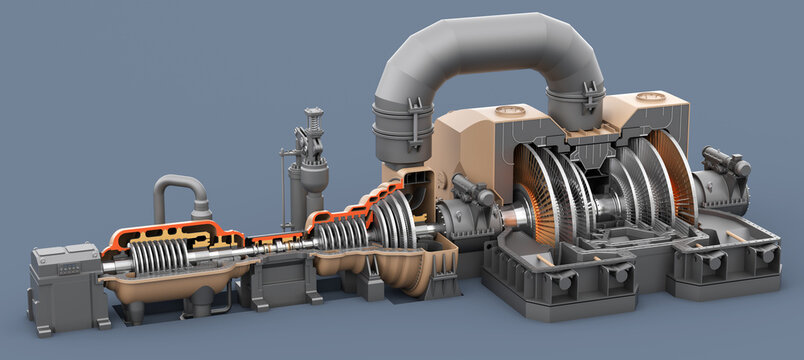
RELIABILITY
MAINTAINABILITY
AVAILABILITY
To achieve high reliability in special-purpose steam turbines, it is essential to implement a comprehensive approach that involves several strategies. Here are some ways to achieve high reliability:
Robust design and engineering: The design and engineering of special-purpose steam turbines should be robust and take into account all relevant safety standards and performance requirements. This can be achieved by conducting thorough design reviews, using advanced design software and tools, and involving experts in the field of steam turbine design and engineering.
High-quality materials and components: Using high-quality materials and components is critical for ensuring the durability and reliability of special-purpose steam turbines. This includes selecting materials that can withstand the turbine’s operating conditions and using components that are designed and tested to meet or exceed relevant safety standards.
Proper maintenance and inspection: Proper maintenance and inspection are critical for ensuring the reliability of special-purpose steam turbines. This involves implementing a comprehensive maintenance program that includes routine inspections, preventive maintenance, and predictive maintenance techniques, such as vibration analysis and oil analysis. Any identified issues should be addressed promptly, and all maintenance procedures should be carried out according to the manufacturer’s recommendations.
Adequate training of personnel: Adequate training of personnel involved in the operation and maintenance of special-purpose steam turbines is critical for ensuring their reliability. This includes providing proper training to operators and maintenance personnel and ensuring that they are aware of the turbine’s operating procedures and maintenance requirements.
Robust quality control program: Implementing a robust quality control program is essential for ensuring the reliability of special-purpose steam turbines. This involves regular quality audits, continuous improvement initiatives, and regular training of personnel involved in the design, construction, operation, and maintenance of the turbine.
Proper safety measures: Proper safety measures should be implemented to ensure the safety of personnel and equipment. This includes implementing safety procedures, using safety equipment, and providing adequate safety training to personnel involved in the operation and maintenance of the turbine.
By implementing these strategies, high reliability can be achieved in special-purpose steam turbines, resulting in more efficient, reliable, and safe operation of the equipment
To achieve better maintainability in special-purpose steam turbines, it is important to implement a comprehensive approach that involves several strategies. Here are some ways to achieve better maintainability:
Robust design and engineering: The design and engineering of special-purpose steam turbines should be robust and take into account all relevant maintainability requirements. This can be achieved by involving maintenance experts in the design process and using design-for-maintainability principles.
Modular design: A modular design approach can improve the maintainability of special-purpose steam turbines. This involves breaking down the turbine into smaller modules that can be easily maintained or replaced, reducing the downtime required for maintenance.
Easy access and serviceability: Special-purpose steam turbines should be designed with easy access to all components, ensuring that they are easily serviceable. This can be achieved by designing the turbine with removable covers, access doors, and service panels.
Standardized components: The use of standardized components can improve maintainability by simplifying the maintenance process and reducing the need for specialized tools and equipment.
Proper maintenance and inspection: Proper maintenance and inspection are critical for ensuring the maintainability of special-purpose steam turbines. This involves implementing a comprehensive maintenance program that includes routine inspections, preventive maintenance, and predictive maintenance techniques, such as vibration analysis and oil analysis.
Adequate training of personnel: Adequate training of personnel involved in the operation and maintenance of special-purpose steam turbines is critical for ensuring their maintainability. This includes providing proper training to maintenance personnel and ensuring that they are aware of the turbine’s maintenance requirements.
Robust quality control program: Implementing a robust quality control program is essential for ensuring the maintainability of special-purpose steam turbines. This involves regular quality audits, continuous improvement initiatives, and regular training of personnel involved in the design, construction, operation, and maintenance of the turbine.
By implementing these strategies, better maintainability can be achieved in special-purpose steam turbines, resulting in more efficient, reliable, and safe operation of the equipment
To achieve higher availability in special-purpose steam turbines, it is important to implement a comprehensive approach that involves several strategies. Here are some ways to achieve higher availability:
Robust design and engineering: The design and engineering of special-purpose steam turbines should be robust and take into account all relevant performance requirements. This can be achieved by conducting thorough design reviews, using advanced design software and tools, and involving experts in the field of steam turbine design and engineering.
Redundancy: Implementing redundancy in critical components of the special-purpose steam turbines can improve their availability. This involves designing the turbine with backup components, such as bearings, seals, and governors, that can take over in case of a failure in the primary component.
Rapid repair and replacement: Rapid repair and replacement of components can improve the availability of special-purpose steam turbines. This can be achieved by ensuring that critical components are readily available, and that maintenance personnel are trained to carry out quick repairs and replacements.
Predictive maintenance: Predictive maintenance techniques, such as vibration analysis and oil analysis, can help identify potential issues in the special-purpose steam turbine before they lead to failure. This can help minimize downtime and improve availability.
Proper maintenance and inspection: Proper maintenance and inspection are critical for ensuring the availability of special-purpose steam turbines. This involves implementing a comprehensive maintenance program that includes routine inspections, preventive maintenance, and predictive maintenance techniques.
Adequate training of personnel: Adequate training of personnel involved in the operation and maintenance of special-purpose steam turbines is critical for ensuring their availability. This includes providing proper training to operators and maintenance personnel and ensuring that they are aware of the turbine’s operating procedures and maintenance requirements.
Robust quality control program: Implementing a robust quality control program is essential for ensuring the availability of special-purpose steam turbines. This involves regular quality audits, continuous improvement initiatives, and regular training of personnel involved in the design, construction, operation, and maintenance of the turbine.
By implementing these strategies, higher availability can be achieved in special-purpose steam turbines, resulting in more efficient, reliable, and safe operation of the equipment.
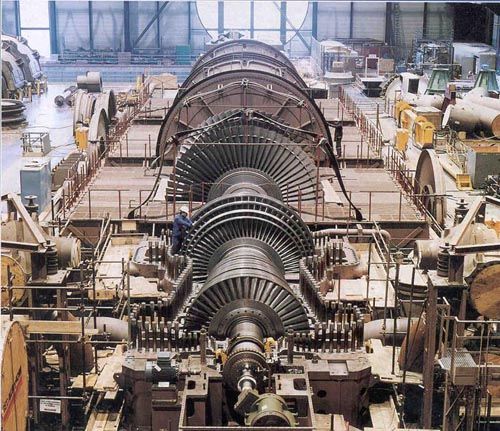
SAFETY
QUALITY CONTROL
DESIGN & ENGINEERING
To achieve higher safety in special-purpose steam turbines, it is important to implement a comprehensive approach that involves several strategies. Here are some ways to achieve higher safety:
Robust design and engineering: The design and engineering of special-purpose steam turbines should be robust and take into account all relevant safety requirements. This can be achieved by conducting thorough design reviews, using advanced design software and tools, and involving experts in the field of steam turbine design and engineering.
Risk assessment: Conducting a comprehensive risk assessment of the special-purpose steam turbine can help identify potential safety hazards and develop mitigation strategies. This involves identifying potential hazards, assessing the likelihood and severity of each hazard, and developing strategies to mitigate or eliminate them.
Safety systems: Implementing safety systems, such as emergency shutdown systems, overspeed protection systems, and automatic trip systems, can help prevent accidents and protect personnel and equipment.
Safety procedures: Developing and implementing comprehensive safety procedures can help minimize the risk of accidents and ensure safe operation of the special-purpose steam turbine. This involves developing procedures for startup and shutdown, routine operations, maintenance, and emergency situations.
Training of personnel: Adequate training of personnel involved in the operation and maintenance of special-purpose steam turbines is critical for ensuring their safe operation. This includes providing proper training to operators and maintenance personnel and ensuring that they are aware of the turbine’s operating procedures and safety requirements.
Compliance with regulations and standards: Complying with relevant regulations and standards, such as those set by the Occupational Safety and Health Administration (OSHA) and the American Society of Mechanical Engineers (ASME), can help ensure the safe operation of special-purpose steam turbines.
Robust quality control program: Implementing a robust quality control program is essential for ensuring the safety of special-purpose steam turbines. This involves regular quality audits, continuous improvement initiatives, and regular training of personnel involved in the design, construction, operation, and maintenance of the turbine.
By implementing these strategies, higher safety can be achieved in special-purpose steam turbines, resulting in a safer working environment for personnel and the protection of equipment and the environment
To achieve a higher quality control in special-purpose steam turbines, it is important to implement a comprehensive approach that involves several strategies. Here are some ways to achieve higher quality control:
Robust design and engineering: The design and engineering of special-purpose steam turbines should be robust and take into account all relevant quality requirements. This can be achieved by conducting thorough design reviews, using advanced design software and tools, and involving experts in the field of steam turbine design and engineering.
Quality control during construction: Quality control should be maintained during the construction of the special-purpose steam turbine. This involves implementing quality assurance and quality control procedures, conducting inspections and testing, and ensuring compliance with applicable standards and regulations.
Quality control during operation: Quality control should be maintained during the operation of the special-purpose steam turbine. This involves conducting routine inspections, implementing preventive maintenance programs, and monitoring the performance of the turbine.
Predictive maintenance: Predictive maintenance techniques, such as vibration analysis and oil analysis, can help identify potential issues in the special-purpose steam turbine before they lead to failure. This can help improve the quality control of the turbine and minimize downtime.
Adequate training of personnel: Adequate training of personnel involved in the operation and maintenance of special-purpose steam turbines is critical for ensuring their quality control. This includes providing proper training to operators and maintenance personnel and ensuring that they are aware of the turbine’s operating procedures and maintenance requirements.
Robust quality control program: Implementing a robust quality control program is essential for ensuring the quality control of special-purpose steam turbines. This involves regular quality audits, continuous improvement initiatives, and regular training of personnel involved in the design, construction, operation, and maintenance of the turbine.
By implementing these strategies, higher quality control can be achieved in special-purpose steam turbines, resulting in more efficient, reliable, and safe operation of the equipment.
To achieve better design and engineering in special-purpose steam turbines, it is important to follow a comprehensive approach that involves several strategies. Here are some ways to achieve better design and engineering:
Define clear project requirements: Before starting the design and engineering of a special-purpose steam turbine, it is essential to define clear project requirements. This includes defining the operating conditions, performance requirements, and any special features required.
Select the right team: To achieve better design and engineering, it is important to have a team of experienced and skilled professionals who have expertise in steam turbine design and engineering. The team should have a deep understanding of the project requirements and be able to collaborate effectively to develop the optimal solution.
Use advanced design software and tools: Advanced design software and tools can help optimize the design of special-purpose steam turbines. This includes using computer-aided design (CAD) software, finite element analysis (FEA) software, and computational fluid dynamics (CFD) software to model the performance of the turbine.
Conduct thorough design reviews: Conducting thorough design reviews is essential to identify potential design issues and ensure that the turbine meets all project requirements. This involves reviewing the design at regular intervals and involving experts in the field of steam turbine design and engineering.
Consider environmental impact: Special-purpose steam turbines can have a significant environmental impact, and it is important to consider this during the design and engineering process. This includes minimizing emissions, reducing noise levels, and minimizing the use of natural resources.
Ensure compliance with regulations and standards: Compliance with relevant regulations and standards, such as those set by the American Society of Mechanical Engineers (ASME), is essential for ensuring the safety and reliability of special-purpose steam turbines.
Conduct testing and validation: Conducting testing and validation of the special-purpose steam turbine is critical to ensure that it meets all project requirements and performs as expected. This includes conducting prototype testing, performance testing, and validating the performance of the turbine under different operating conditions.
By implementing these strategies, better design and engineering can be achieved in special-purpose steam turbines, resulting in more efficient, reliable, and safe operation of the equipment.
STEAM TURBINES
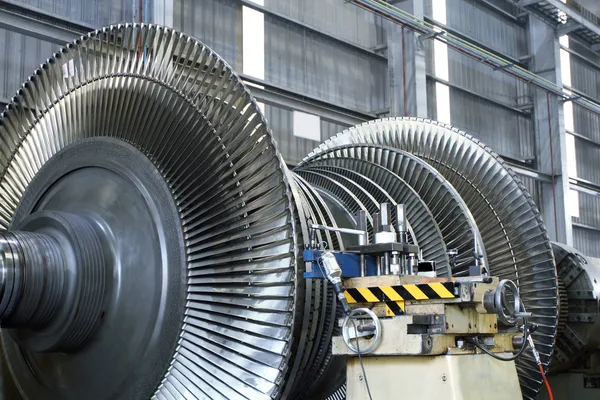
INDEX - STEAM TURBINES
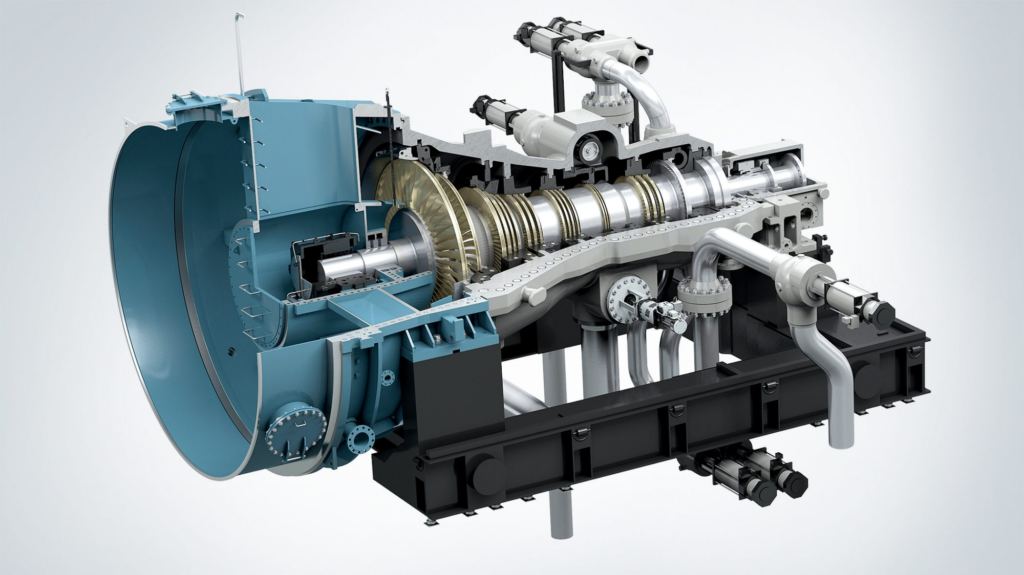
INTRODUCTION - STEAM TURBINES
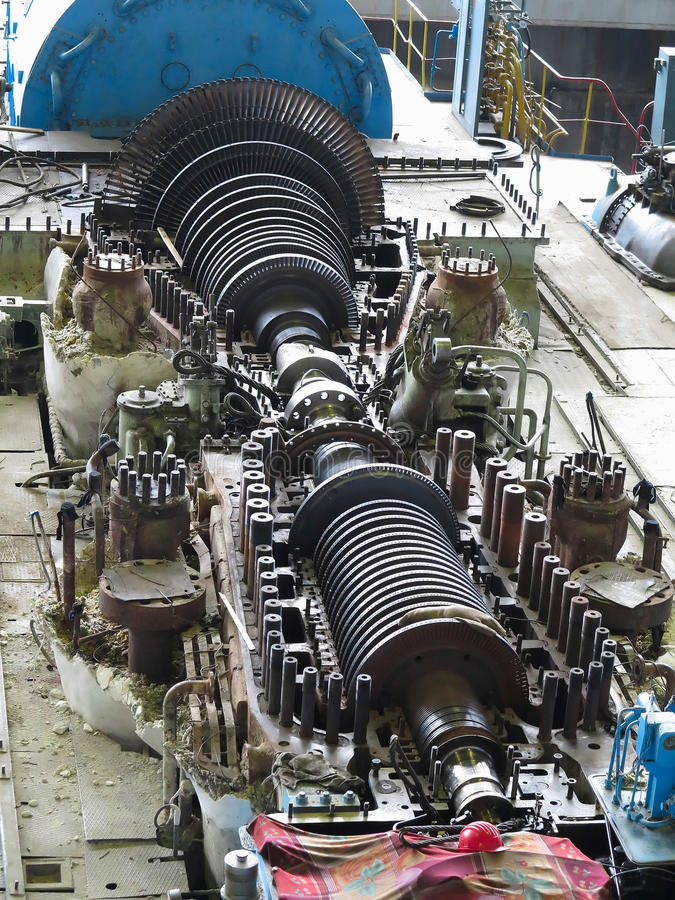
SECTIONS - STEAM TURBINES
CRITICAL FACTORS IN STEAM TURBINES
The design, engineering, construction, maintenance, and operation of industrial steam turbines are critical for ensuring reliable and efficient power generation and oil and gas production. The following are some of the most critical factors to consider in these areas:
Reliability: The reliability of steam turbines is critical to ensure uninterrupted operation and minimize downtime. This can be achieved through the selection of high-quality materials, robust design, and rigorous testing and inspection.
Efficiency: The efficiency of steam turbines is essential to minimize fuel consumption and reduce emissions. This can be achieved through the design of optimized steam cycles, improved turbine blade profiles, and the use of advanced materials and coatings.
Performance: The performance of steam turbines is critical to ensure that they meet the required power output and operating parameters. This can be achieved through accurate modeling and simulation, testing and validation, and continuous monitoring and optimization.
Design: The design of steam turbines is critical to ensure that they meet the required specifications, including power output, steam pressure and temperature, and operating conditions. This can be achieved through the use of advanced design tools and techniques, such as computational fluid dynamics (CFD) and finite element analysis (FEA).
Engineering: The engineering of steam turbines is critical to ensure that they are designed and constructed to meet the required standards and codes. This can be achieved through the use of experienced and qualified engineers, adherence to industry standards and regulations, and rigorous quality control and assurance processes.
Construction: The construction of steam turbines is critical to ensure that they are built to the required standards and specifications. This can be achieved through the use of qualified and experienced construction teams, adherence to industry standards and regulations, and rigorous quality control and assurance processes.
Maintenance: The maintenance of steam turbines is critical to ensure that they operate reliably and efficiently over their lifetime. This can be achieved through the use of comprehensive maintenance programs, including regular inspections, monitoring, and testing, and the use of advanced diagnostic tools and techniques.
Operation: The operation of steam turbines is critical to ensure that they operate safely and efficiently. This can be achieved through the use of qualified and experienced operators, adherence to industry standards and regulations, and the use of advanced control and monitoring systems.
Safety: The safety of steam turbines is critical to ensure that they operate safely and minimize the risk of accidents or equipment failure. This can be achieved through the use of comprehensive safety programs, including risk assessments, hazard identification, and the use of appropriate safety equipment and procedures.
Here are some critical factors to consider when designing and engineering special steam turbines for high reliability:
Material selection: Selecting high-quality materials that can withstand high temperatures, pressures, and corrosive environments is critical for ensuring the longevity and reliability of steam turbines.
Component design: Designing components such as blades, rotors, and seals with precision and accuracy is essential for preventing damage or wear that could lead to failure.
Performance analysis: Conducting thorough performance analyses to ensure that the steam turbine is optimized for efficiency, reliability, and safety.
Vibration analysis: Monitoring and analyzing vibration levels to identify any potential issues or abnormalities that could lead to failure.
Lubrication and cooling systems: Designing effective lubrication and cooling systems to prevent overheating, reduce wear, and extend the life of the steam turbine.
Control and monitoring systems: Implementing advanced control and monitoring systems to ensure optimal performance and early detection of any issues.
Maintenance and inspection: Establishing a comprehensive maintenance and inspection plan to ensure that the steam turbine is regularly inspected, maintained, and repaired as needed to prevent failures.
Safety systems: Incorporating safety systems such as overspeed protection, emergency shutdowns, and pressure relief valves to protect against catastrophic failures.
Compliance with industry standards: Ensuring that the steam turbine design and engineering comply with relevant industry standards and regulations for safety, quality, and reliability.
